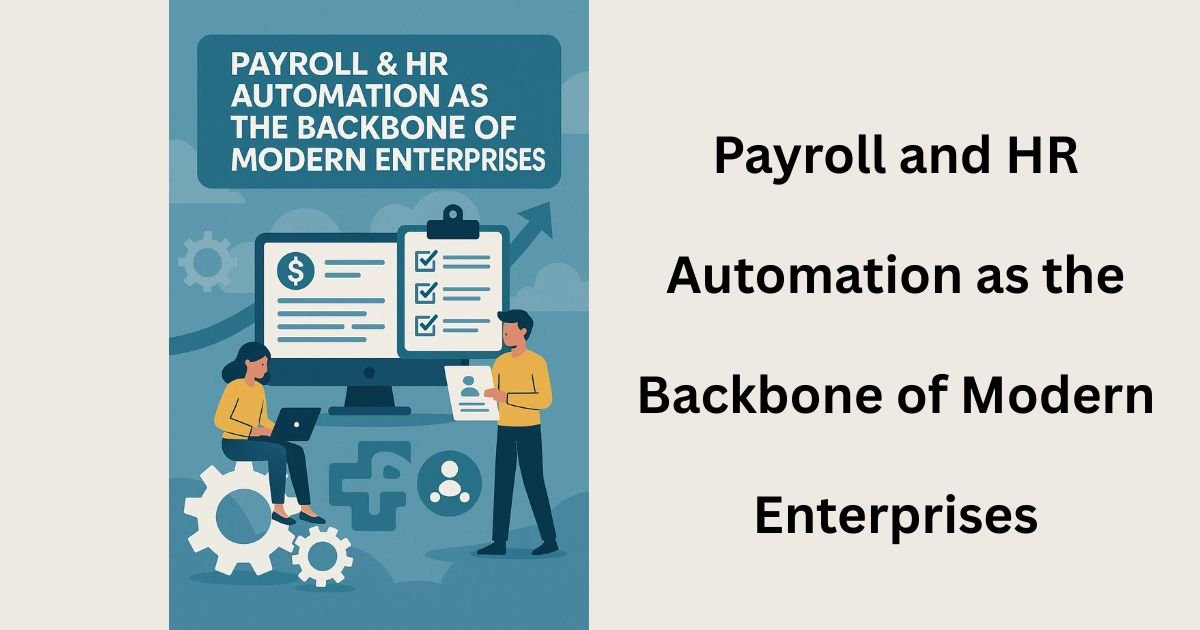In today’s fast-changing business world, organizations are rapidly embracing technology to streamline operations and enhance workforce productivity. Among the most critical areas of digital transformation are payroll and human resource management. Modern companies no longer rely on manual spreadsheets and fragmented systems. Instead, they leverage advanced digital solutions like the Best Payroll Management Software in India and integrated HR automation tools to drive accuracy, compliance, and efficiency. This shift not only reduces administrative burdens but also empowers HR teams to focus on strategic initiatives that foster growth and employee satisfaction.
The Rising Need for HR and Payroll Automation
As organizations expand, so do the complexities of managing a diverse workforce. Manual payroll processing often leads to errors, delayed payments, and compliance risks. Similarly, traditional HR practices can become bottlenecks when handling recruitment, performance management, and employee engagement.
HR and payroll automation addresses these challenges by standardizing processes, automating repetitive tasks, and ensuring seamless data flow between departments. Enterprises that adopt automated solutions gain improved accuracy, quicker decision-making, and enhanced transparency. This technological backbone not only supports current operations but also scales effortlessly with business growth.
Transforming Payroll Management with Automation
Payroll is one of the most sensitive and crucial functions of any organization. Employees expect timely and accurate salaries, while businesses must ensure compliance with labor laws and tax regulations. Automation brings precision and speed to payroll management.
Modern payroll systems can:
- Calculate salaries, deductions, and benefits with high accuracy.
- Manage compliance with government regulations and tax laws.
- Integrate seamlessly with attendance and leave management systems.
- Generate payslips, reports, and audits in real-time.
By automating these tasks, companies reduce human error, ensure compliance, and foster trust among employees. It also minimizes the workload of HR teams, giving them more bandwidth to focus on strategic initiatives.
The Role of HR Automation in Workforce Management
HR automation extends far beyond payroll. It encompasses recruitment, onboarding, training, performance appraisals, and employee engagement. The shift towards automation helps HR departments transform from administrative support functions into strategic business partners.
Some key areas where HR automation makes an impact include:
- Recruitment and Onboarding: Digital platforms streamline job postings, candidate screening, and document collection. Automated onboarding ensures new hires are engaged from day one.
- Performance Management: Automated systems track employee performance against set goals, helping managers provide timely feedback.
- Learning and Development: Online training modules and progress trackers enable continuous employee development.
- Employee Engagement: Tools like surveys, feedback portals, and recognition systems keep employees connected and motivated.
These improvements strengthen the overall employee experience and align HR practices with business goals.
Why Enterprises Are Turning to Integrated HR and Payroll Systems
For decades, payroll and HR systems operated in silos. However, businesses are now realizing the value of integrated solutions. A unified platform eliminates duplication of effort, reduces errors, and ensures that employee data remains consistent across all functions.
Some advantages of integrated systems include:
- Centralized Data Management: Employee information is stored securely in one place, ensuring easy access and accuracy.
- Seamless Compliance: Real-time updates keep the organization compliant with ever-changing labor laws.
- Enhanced Decision-Making: Access to real-time analytics helps leaders make data-driven decisions about workforce planning and compensation.
- Employee Self-Service: Employees can view payslips, apply for leave, and update personal information without HR intervention.
These integrated solutions not only simplify processes but also create a positive impact on employee morale and organizational culture.
Impact on Business Efficiency and Growth
Enterprises that adopt payroll and HR automation witness tangible improvements in efficiency, cost savings, and employee satisfaction. By eliminating repetitive manual work, organizations save valuable time and reduce operational costs.
Moreover, automation ensures compliance with complex legal and tax requirements, minimizing the risk of penalties. The transparency and accuracy offered by automated systems foster trust among employees, leading to improved retention rates. Businesses that leverage these tools also find it easier to scale, as the systems can handle growing workforce demands without additional manual effort.
In a competitive market, where agility and innovation define success, payroll and HR automation provide a significant edge.
Choosing the Right Payroll and HR Automation Tools
Selecting the right technology partner is critical for successful implementation. Businesses must consider factors such as ease of use, scalability, integration capabilities, and data security. Solutions like the Best HR Software in India are designed to address the unique challenges faced by enterprises of all sizes, from startups to large corporations.
Key considerations when selecting a solution include:
- Scalability: Can the software grow with the organization?
- Integration: Does it integrate with existing systems such as accounting and attendance?
- Compliance: Does it stay updated with the latest labor and tax regulations?
- User Experience: Is the interface intuitive for both HR teams and employees?
- Support and Training: Does the vendor offer robust customer support and training resources?
A well-chosen solution ensures smoother implementation and maximizes return on investment.
The Future of Payroll and HR Automation
As artificial intelligence, machine learning, and data analytics continue to evolve, the future of payroll and HR automation looks even more promising. Predictive analytics will help businesses anticipate workforce trends, while AI-driven chatbots can handle routine employee queries. Cloud-based systems will further enhance flexibility, enabling remote access and global workforce management.
Enterprises that invest in these technologies today are not just modernizing their operations but also preparing for a future where agility, data-driven insights, and employee experience define business success.
Conclusion
Payroll and HR automation are no longer optional add-ons—they have become the backbone of modern enterprises. From ensuring accurate payroll processing to enhancing employee engagement, automation delivers unmatched value to organizations. By adopting integrated and scalable solutions, businesses can achieve compliance, improve efficiency, and create a work environment where employees thrive.
Enterprises that leverage these tools position themselves for long-term growth and resilience in an increasingly competitive landscape. Payroll and HR automation, backed by advanced technology, truly form the foundation upon which modern businesses are built.

